Amplify Your Energy: Powerful Mantras to Elevate Your Sage Burning Rituals
Maybe you have seen peoples burning that white / grey plant stick, before a Yoga class, a ceremony , or simply in their house? It is called smudging and the plant is the white sage , for us , westerner, it has mainly the utility of cleansing and purifying the air and the environment , and getting rid of negative energies. But Sage is way more traditional than that and has a deep meaning in ancestral cultures
In the realm of wellness and spiritual practices, few rituals are as ancient and revered as the art of burning sage, also known as smudging. This ancient practice, deeply rooted in the traditions of Native Americans and indigenous people, has gained popularity in modern times as a powerful tool for cleansing spaces and promoting positive energy. In this comprehensive guide, we’ll explore the mantras and techniques associated with burning sage, delving into the rich history and spiritual significance of this sacred ceremony.
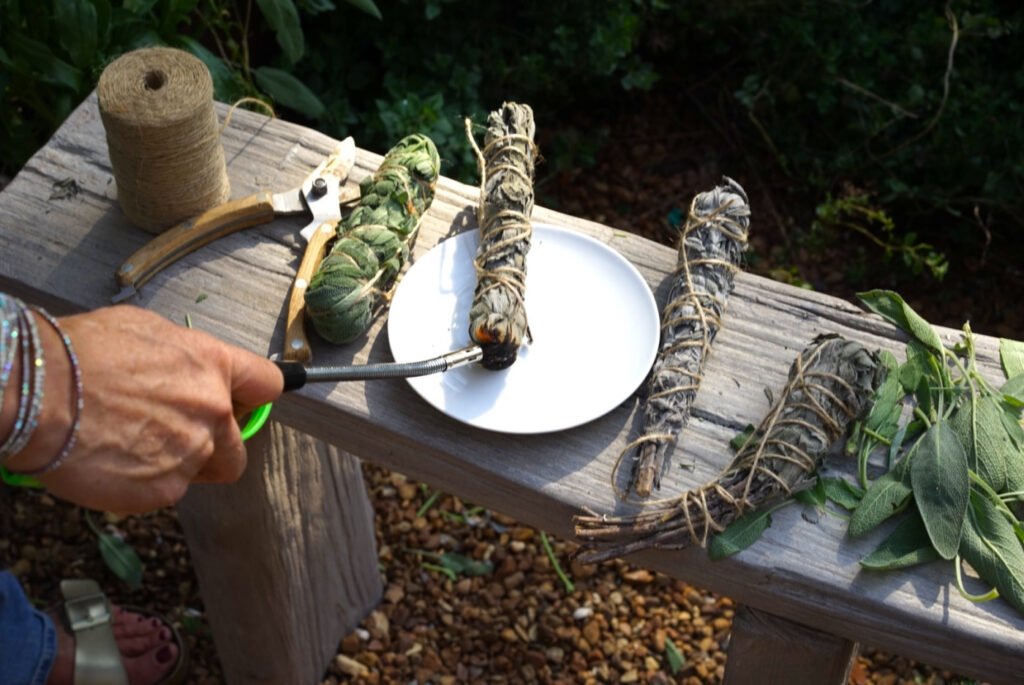
Botanical Characteristics
White sage belongs to the Lamiaceae family, commonly known as the mint family. It typically grows to a height of 1.3 to 1.5 meters (4.3 to 4.9 feet) and spreads about 1.3 meters wide. The plant is characterized by its whitish, evergreen leaves that range from 3 to 9 cm in length. These leaves are covered in hairs that trigger oil glands, releasing a strong aroma when rubbed.
One of the most distinctive features of white sage is its flowers. In spring, the plant produces several flower stalks that can reach up to 1.3 meters above the foliage. The flowers are white to pale lavender and have a unique structure that allows only large insects like carpenter bees or bumblebees to access the nectar . This characteristic is reflected in its scientific name, Salvia apiana, with “apiana” meaning “bee”.
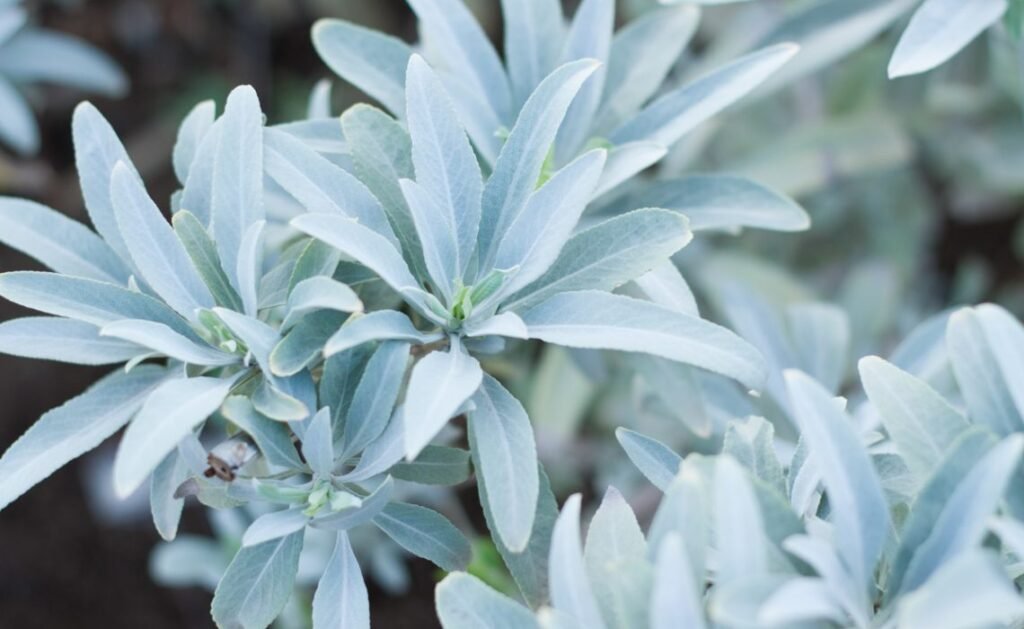
Cultural Significance and Traditional Uses
White sage holds immense cultural significance, particularly among Native American tribes. It has been used for centuries in spiritual and medicinal practices, reflecting a deep connection between indigenous peoples and the natural world. In Native American traditions, white sage is considered a sacred herb and is often used in smudging ceremonies.
These rituals involve burning sage to cleanse spaces, people, and objects of negative energy. The smoke from burning sage is believed to carry prayers to the spiritual realm, facilitating communication with ancestors and providing guidance. Beyond its spiritual applications, white sage has been traditionally used for its medicinal properties.
Various tribes, including the Kiowa and Dakota, have used white sage infusions to treat lung issues, stomach ailments, and other health conditions. The Cheyenne tribe even used crushed white sage leaves as a snuff for certain conditions.

Modern Applications and Benefits
In recent years, white sage has gained popularity in wellness practices worldwide. Its use has expanded beyond traditional contexts, finding applications in aromatherapy, stress relief, and air purification. The practice of smudging with white sage has been adopted by various wellness communities as a method to promote relaxation and mindfulness.
The aromatic qualities of white sage are highly valued in aromatherapy, where its scent is believed to have a grounding effect, helping to reduce anxiety and promote calmness. Some studies suggest that the smoke from burning sage can reduce airborne bacteria, making it a natural air purifier . This property, combined with its insect-repelling capabilities, has contributed to its popularity in creating clean and serene environments.
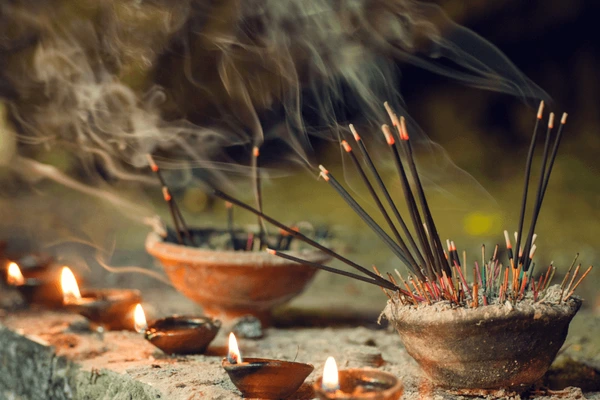
Conservation Concerns and Ethical Considerations
Despite its popularity, the increased demand for white sage has led to significant conservation concerns. Overharvesting of wild white sage populations has raised alarms about its sustainability and survival in natural habitats. Most white sage available in the market is often illegally harvested from public or private lands without proper permissions, which has significant ecological impacts.
Moreover, the commercialization of white sage has sparked debates over cultural appropriation. Many Native American groups and allies argue that the widespread use of white sage by non-Native people, particularly in wellness and spiritual practices, constitutes a disrespectful appropriation of their sacred traditions.
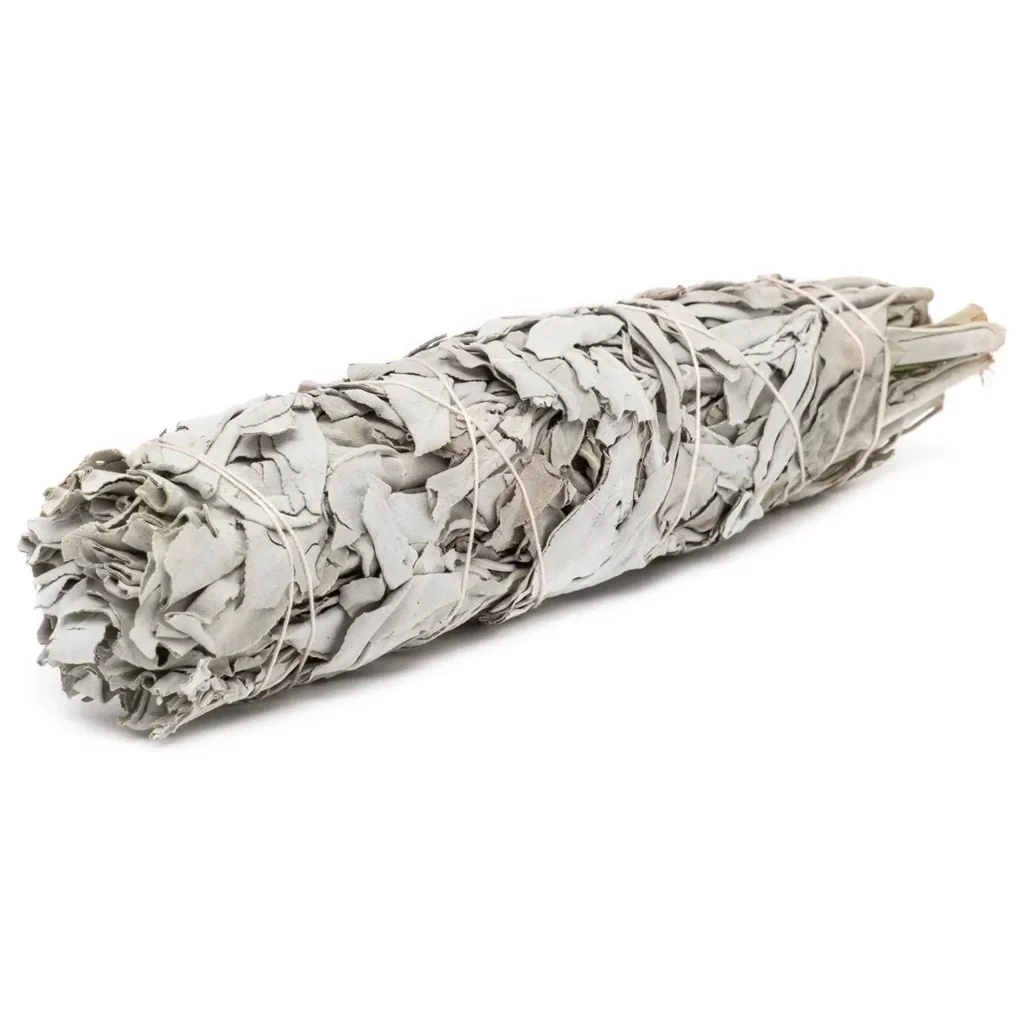
The Origins of Sage Burning
Sage burning, or smudging, is an ancient practice that has been used for centuries by Native Americans and other indigenous people around the world. The use of sacred herbs like white sage (Salvia apiana) and palo santo has been integral to spiritual and cleansing rituals across various cultures.In Native American traditions, the burning of sage is believed to purify the air, cleanse negative energies, and invite positive spirits into a space. This practice has been passed down through generations and continues to be an essential part of many spiritual practices today.
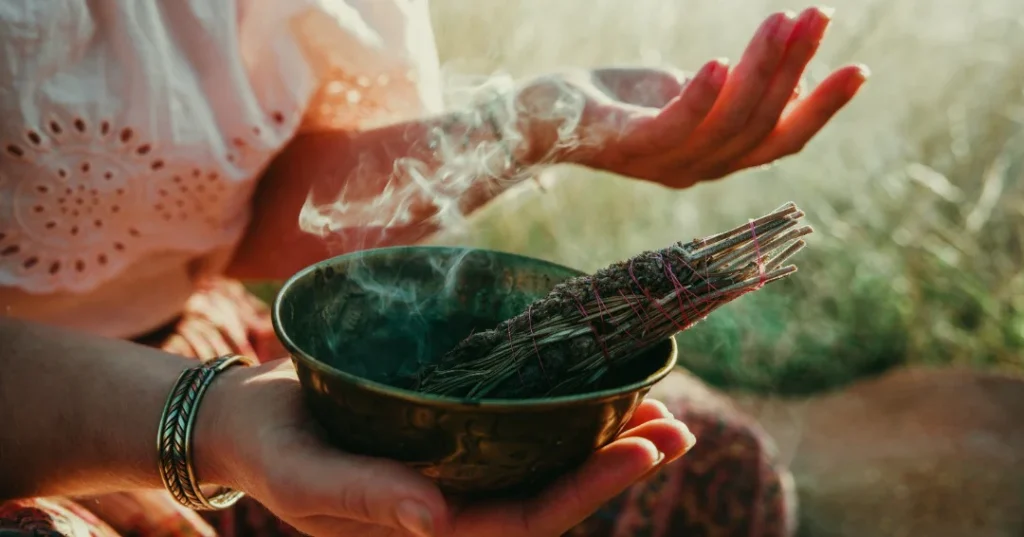
The Power of Smudging
Smudging is more than just burning herbs; it’s a sacred ceremony that involves intention, reverence, and the use of specific mantras or prayers. The smoke of these fragrant plants is believed to carry prayers to the heavens and cleanse both the physical space and the energy field of individuals.
Some of the benefits associated with smudging include:
1. Clearing negative energies and stagnant energy
2. Purifying the air and removing bacteria
3. Improving mood and reducing stress
4. Enhancing focus and clarity
5. Promoting a sense of calm and well-being

Preparing for a Smudging Ceremony
Before beginning a smudging ceremony, it’s essential to gather the necessary tools and create a sacred space.
Here’s what you’ll need:
✔ A sage bundle or sage smudge stick
✔ An abalone shell or fireproof bowl to catch ashes
✔ A feather or fan (optional, for directing smoke)
✔ Matches or a lighter
To create a sacred space, consider the following steps:
1. Clear the area of clutter and open windows to allow for ventilation.
2. Set an intention for your smudging ritual.
3. Light candles or dim the lights to create a peaceful atmosphere.
4. Take a few deep breaths to center yourself.
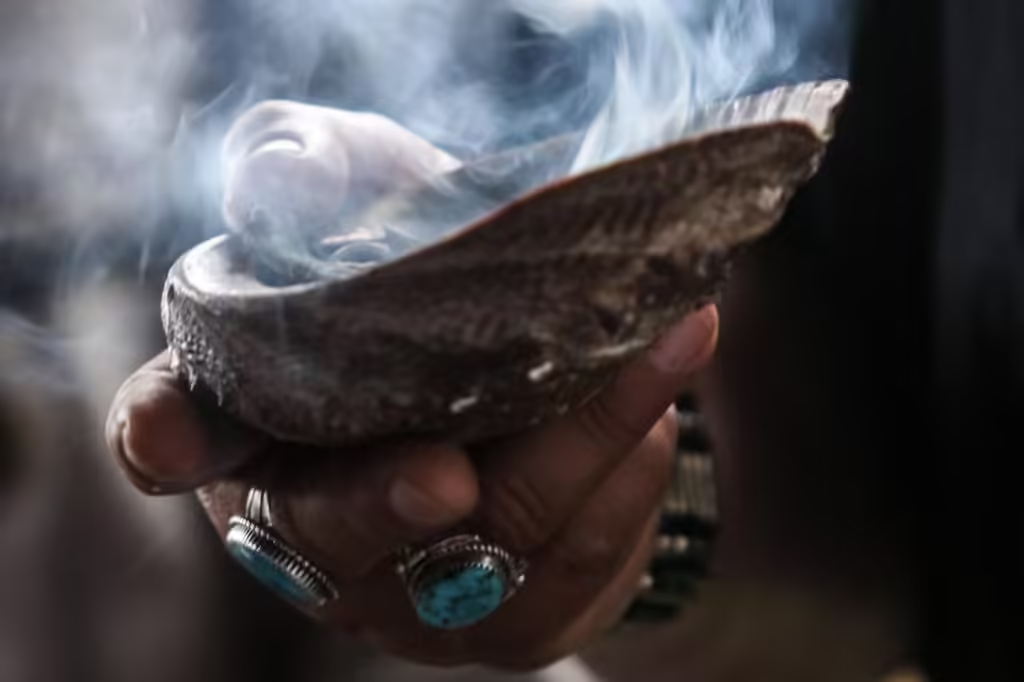
Mantras for Burning Sage
Mantras are powerful tools that can enhance the effectiveness of your smudging ritual. These sacred phrases help to focus your intention and amplify the cleansing energy of the sage.
Here are some mantras you can use during your smudging ceremony:
1. “I cleanse this space of all negative energy and invite in light and love.” This mantra is perfect for general space clearing and inviting positive energy into your environment.
2. “Great Spirit, I ask for your blessings and protection in this sacred space.” Calling upon the Great Spirit is a common practice in Native American traditions and can be used to seek divine guidance and protection.
3. “I release all that no longer serves me and welcome in divine abundance and creativity.” Use this mantra to let go of negative thoughts and invite divine abundance of creativity into your life.
4. “With this sacred smoke, I purify my body, mind, and spirit.” This mantra is ideal for personal cleansing, addressing both the physical body and the spiritual self.
5. “I banish all negativity and open the door to beautiful things and a beautiful life.” Use this mantra to focus on attracting positivity and beauty into your life.
6. “May this smoke carry away all low vibrational energy and fill this space with divine light.” This mantra combines the concepts of energy clearing and inviting in divine light.

The Smudging Process
Now that you have your tools and mantras ready, here’s a step-by-step guide to performing a smudging ceremony:
1. Light your sage bundle or sage stick, allowing it to smolder and produce smoke.
2. Hold the sage over your abalone shell or fireproof bowl to catch any falling ashes.
3. Begin at the entrance of the space you’re cleansing, typically the front door.
4. Walk clockwise around the area, wafting the smoke into corners and along walls.
5. Pay special attention to areas where stagnant energy may accumulate, such as corners and doorways.
6. As you move through the space, recite your chosen mantra or smudging prayer.
7. When you’ve completed the circuit, return to the center of the space.
8. Take a moment to smudge yourself, wafting the smoke over your body from head to toe.
9. Extinguish the sage by gently pressing it into the abalone shell or bowl.
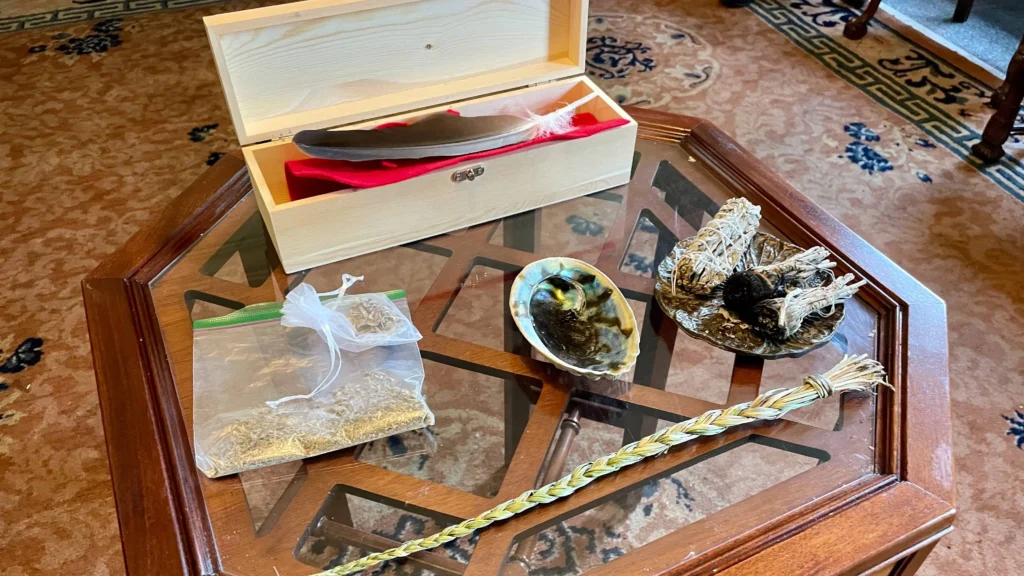
Additional Tips for Effective Smudging
To enhance your smudging practice and create a truly transformative experience, consider these additional tips:
1. Timing: Many practitioners believe that smudging is most effective during transitional times, such as the new moon, full moon, or when moving into a new home.
2. Frequency: Regular smudging can help maintain a positive energy flow in your space. Consider smudging weekly or monthly, or whenever you feel the need for energetic cleansing.
3. Intention Setting: Before beginning your smudging ritual, take a moment to set a clear intention. This could be as simple as “I cleanse this space of all negativity” or as specific as “I invite abundance and creativity into my life.”
4. Combining Herbs: While white sage is the most common herb used for smudging, you can also experiment with other sacred herbs like cedar, sweetgrass, or lavender. Each herb has its own unique properties and benefits.
5. Smoke Alternatives: For those sensitive to smoke or living in spaces where burning is not allowed, consider using sage sprays or essential oils as alternatives for energy clearing.
6. Gratitude Practice: After completing your smudging ceremony, take a moment to express gratitude for the cleansing and the positive energy now flowing through your space.
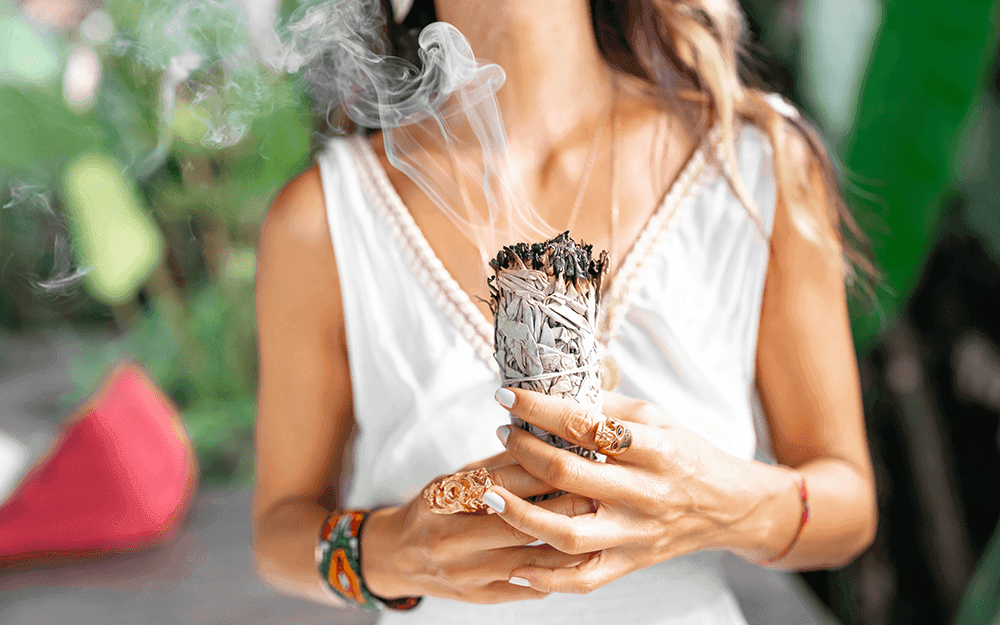
Global Perspectives on Smudging
While smudging is often associated with Native American traditions, similar practices can be found in cultures around the world. From the use of incense in Asian spiritual practices to the burning of herbs in European folk traditions, the concept of purification through smoke is nearly universal.
In recent years, the practice of smudging has gained popularity in various parts of the world, including:
✔ United States: Where it has become a common practice in wellness and spiritual communities.
✔ United Kingdom: Where interest in alternative spiritual practices has grown.
✔ South Africa: Where traditional healers have long used smoke cleansing rituals.
✔ New Zealand: Where Maori traditions include similar smoke-based purification practices.
✔ United Arab Emirates: Where burning incense and herbs is a part of cultural traditions.
It’s important to note that as smudging has gained popularity globally, there have been concerns about cultural appropriation and the sustainability of wild sage harvesting. When practicing smudging, it’s crucial to approach the ritual with respect for its cultural origins and to source materials ethically.
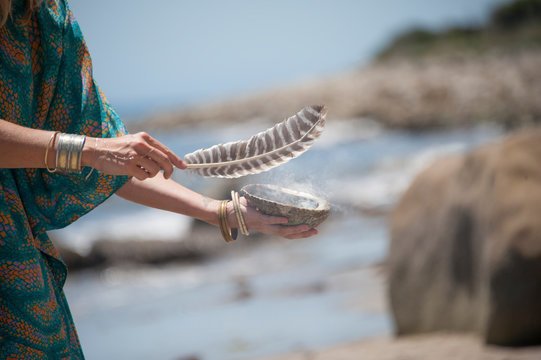
Conclusion
Burning sage and reciting mantras is a powerful tool for cleansing spaces, promoting positive energy, and connecting with the spiritual realm. By incorporating these ancient practices into your wellness routine, you can create a harmonious environment that supports your physical, emotional, and spiritual well-being.Remember that the most important aspect of any spiritual practice is intention.
Whether you’re clearing your home of negative energies, preparing for a meditation session, or simply seeking to create a more peaceful atmosphere, the combination of sage smoke and meaningful mantras can be a transformative experience. As you embark on your journey with sage burning and mantras, approach the practice with an open heart and mind.
